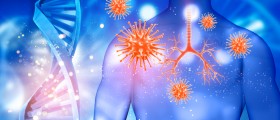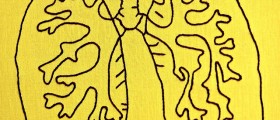
Dust pneumonia is a medical condition that develops due to the excessive exposure to dust. This form of respiratory disorder affected a great number of people during 1930s in the US when the Dust bowl took place. The Dust bowl refers to a period of dust storms that affected American and Canadian prairies during a severe drought in1930s. The Dust Bowl caused ecological damage, agricultural depression and consequently economic and social disaster. Enormous amount of dust in the air caused dust pneumonia in large portion of the population and many died.
Causes of Dust Pneumonia
Dust pneumonia occurs when excessive and prolonged inhalation of dirt and dust results in inflammation of the alveoli, tiny air sacs within the lungs. Normally, when a person inhales dust particles in trace amounts, the cilia (small hair like organs in the lungs) protect our lungs from foreign particles. However, overexposure to dust affects functioning of the cilia allowing the air pollutants to enter deep into the alveoli. Due to that, the lungs get irritated and it may result in pneumonia. Dust pneumonia is also known as chemical pneumonia and can be also caused by toxins and harmful gases.
Symptoms of Dust Pneumonia
Dust pneumonia is acute respiratory infection followed by painful and severe symptoms. Initial symptom of dust pneumonia is cough, which normally helps the lungs to eliminate foreign particles. In the beginning, the cough is dry. Later, the lungs start to use mucus to force the particles out thus cough is accompanied with mud like mucus. Mucus may also be yellow or green. Wheezing is another symptom of dust pneumonia. Wheezing occurs due to constriction of the airways resulting from build up of debris and fluid in the lungs. As dust pneumonia progresses, fever develops. Fever always indicates presence of an infection and it is a body’s natural mechanism for dealing with infection. Dust pneumonia is commonly followed by high fever. Chest pain is a common symptom of dust pneumonia that results from accumulation of dust in the air passage ways and constriction. Chest pain accompanies cough or may occur when sufferer is breathing deeply. In advanced stage of dust pneumonia, a septic shock may occur. Septic shock is a life-threatening condition that occurs when an infection reaches the bloodstream and other parts of the body. Septic shock seriously affects health, causes organ failure and may lead to death if left untreated. Other symptoms associated with dust pneumonia include: difficulty breathing, dyspnea, headache, nausea, malaise and nose, eye, mouth and throat burning sensation.
- www.cdc.gov/nchs/fastats/pneumonia.htm
- www.cdc.gov/fungal/pdf/cocci-fact-sheet-sw-us-508c.pdf
- Photo courtesy of James Heilman, MD by Wikimedia Commons: commons.wikimedia.org/wiki/File:PneumoniaRUL.jpg










-And-Breathing-Problems_f_280x120.jpg)






Your thoughts on this
Loading...